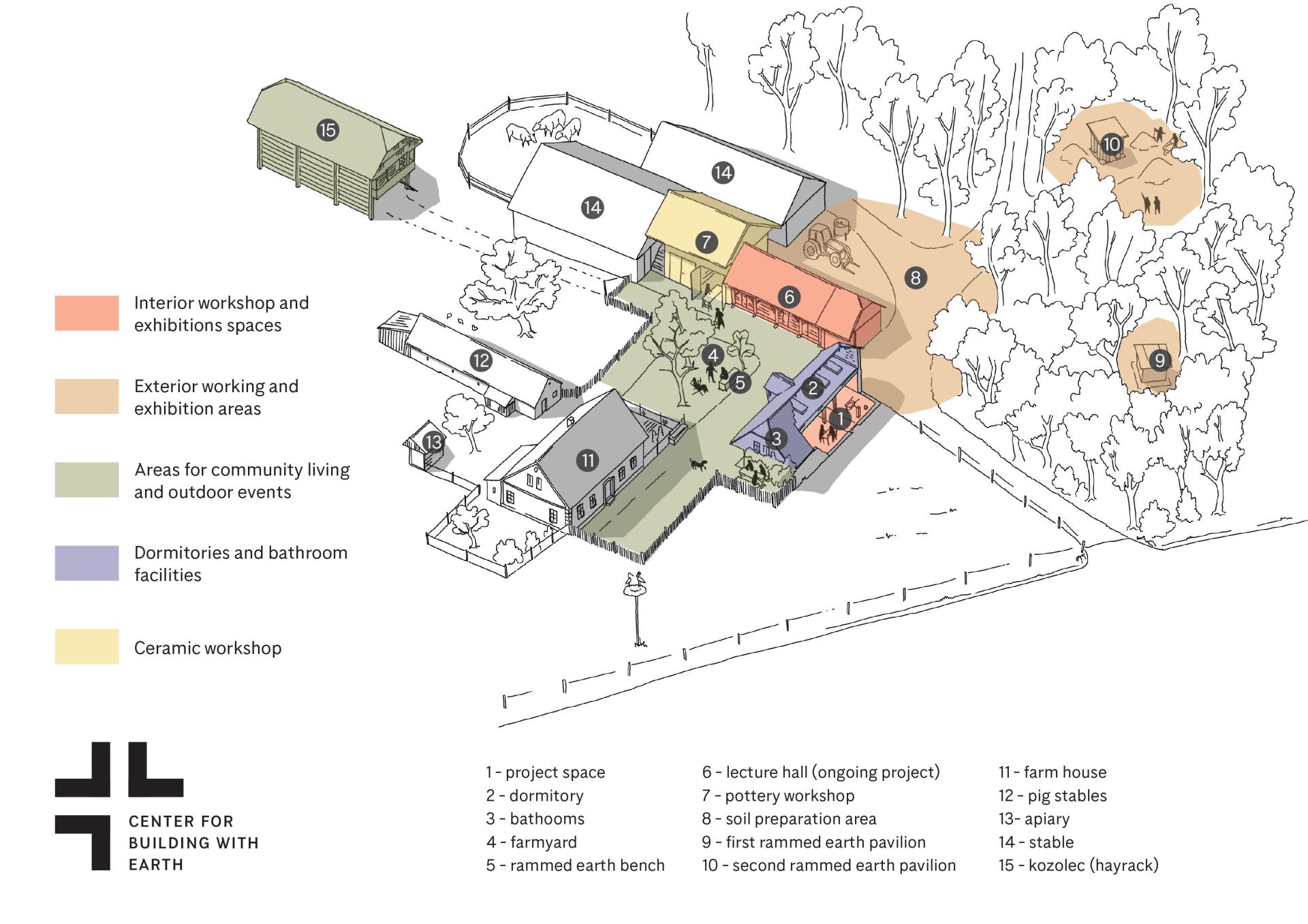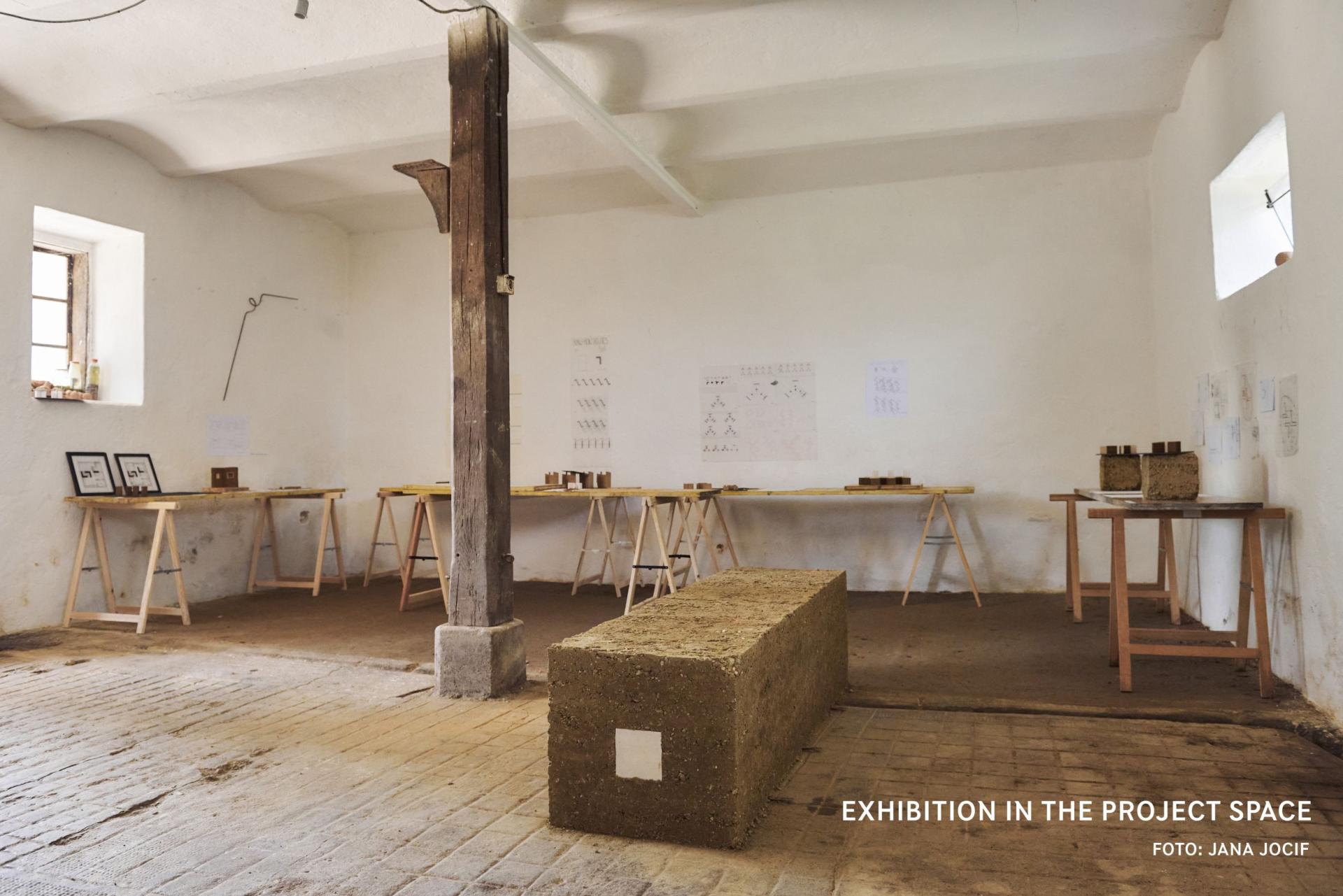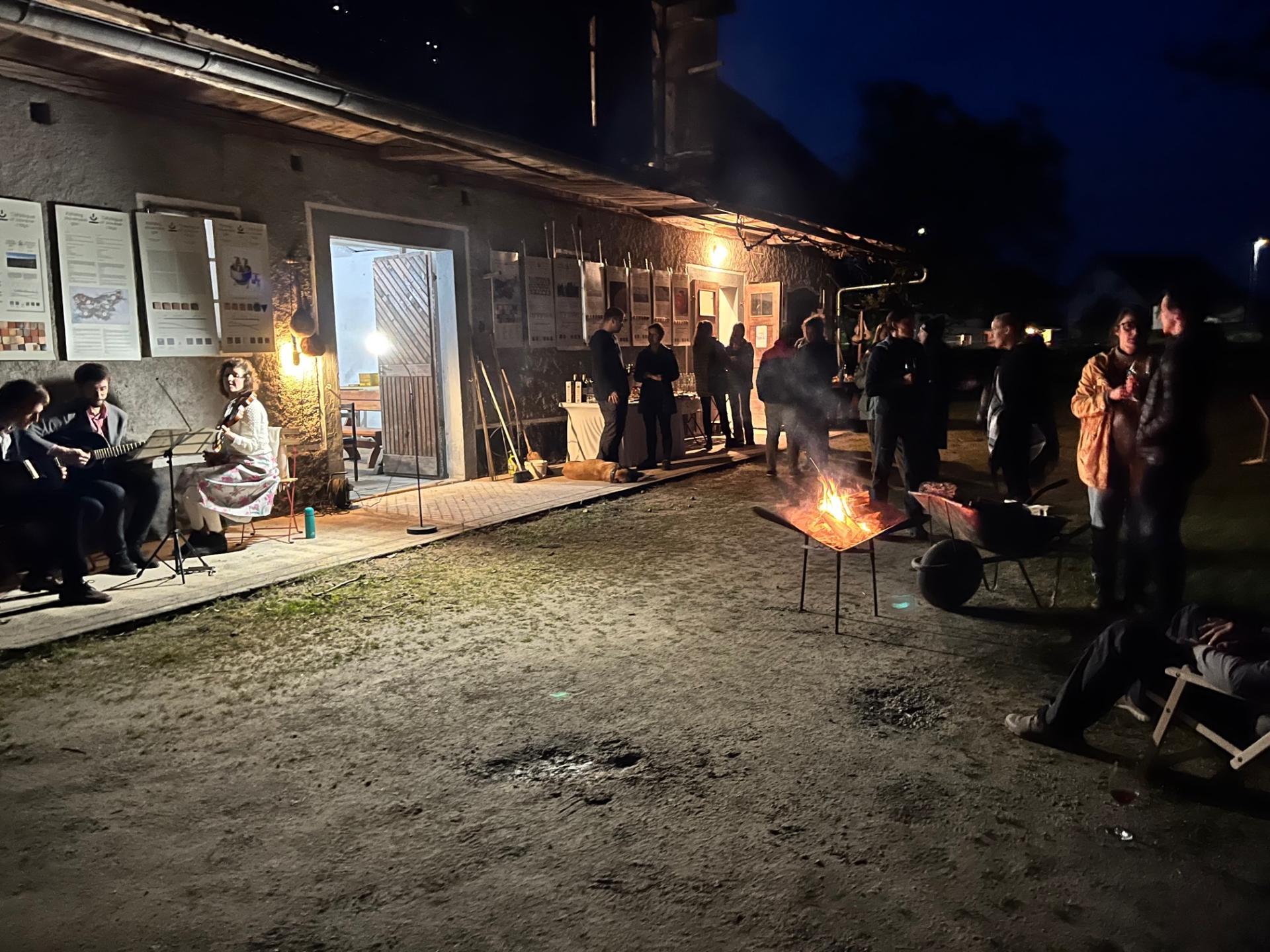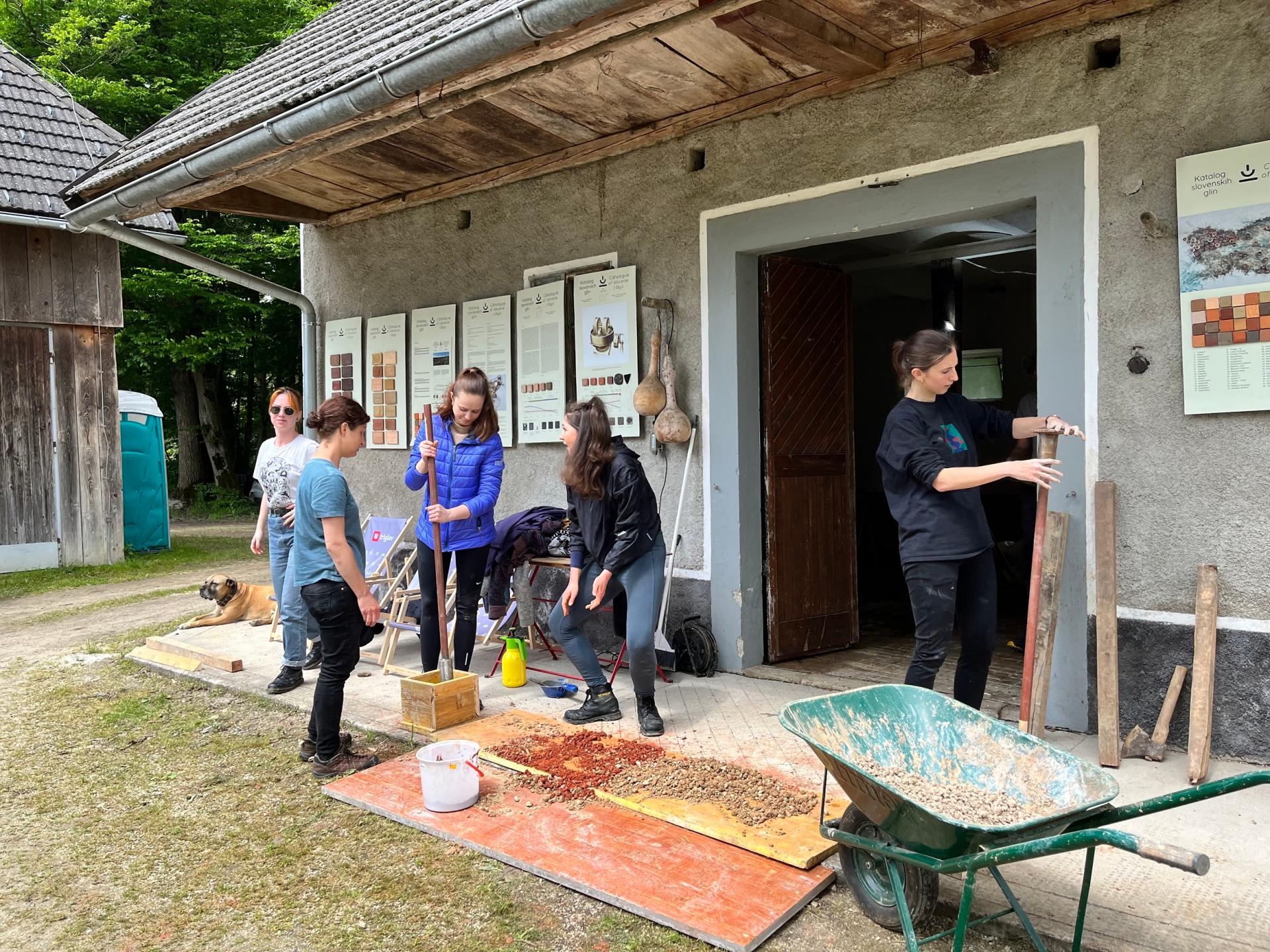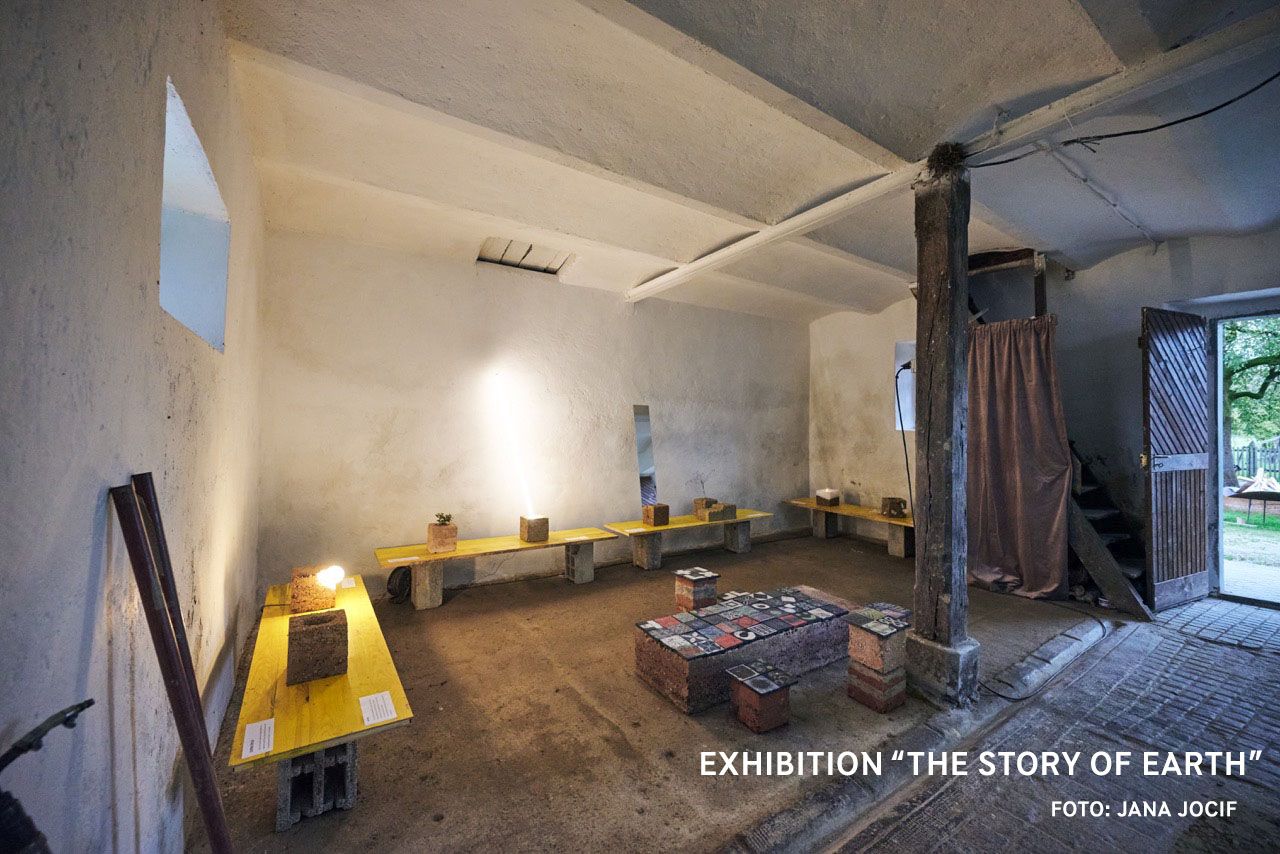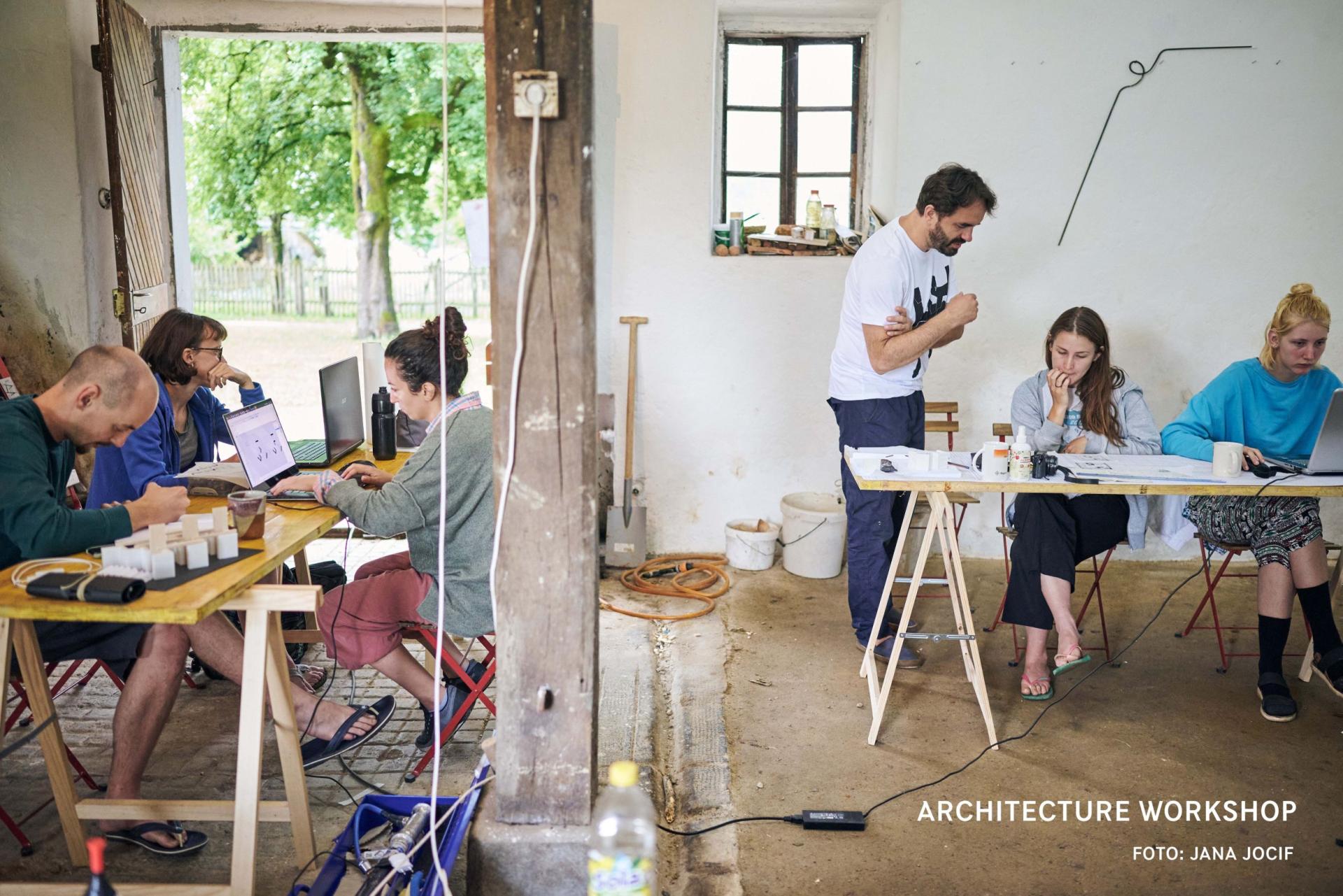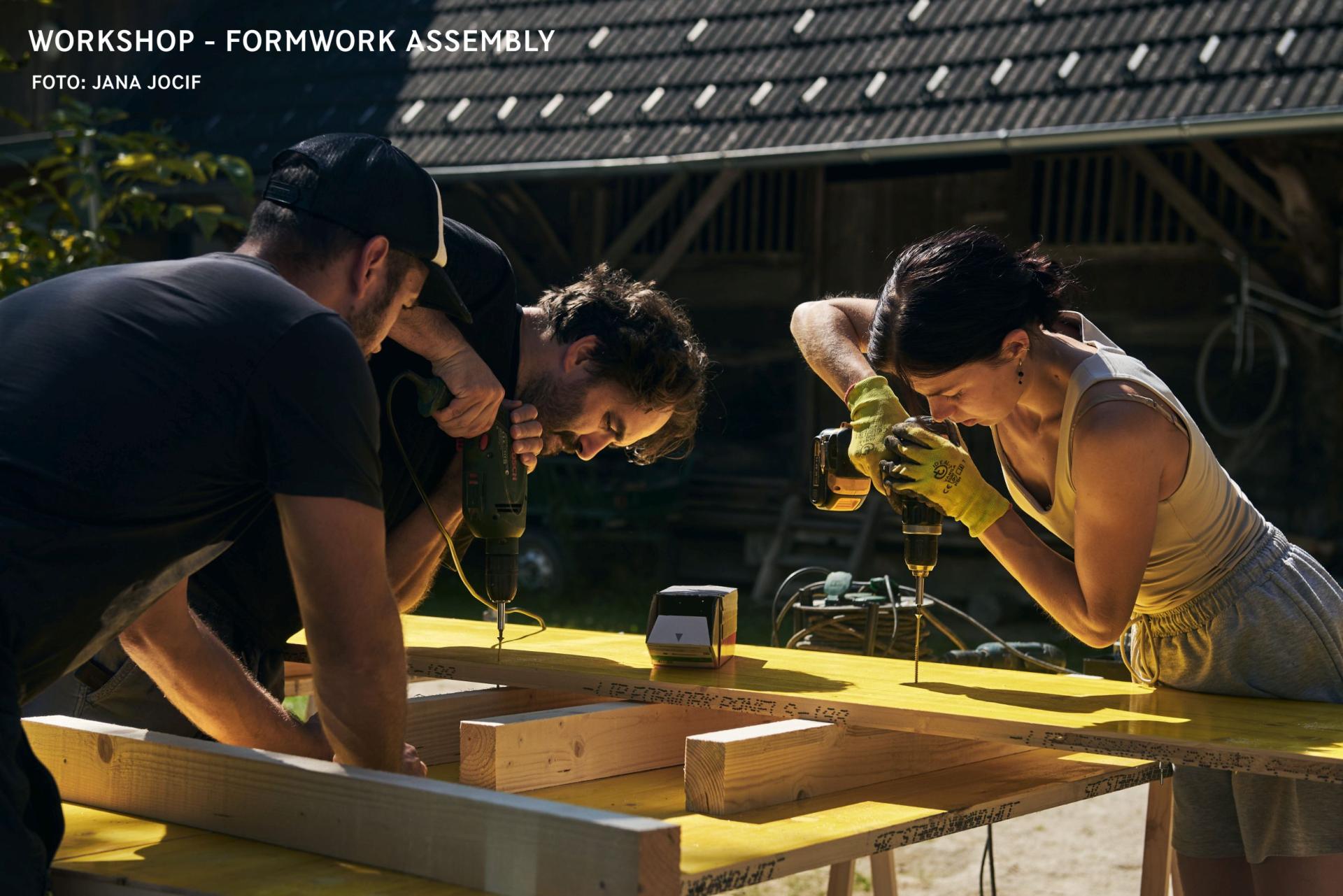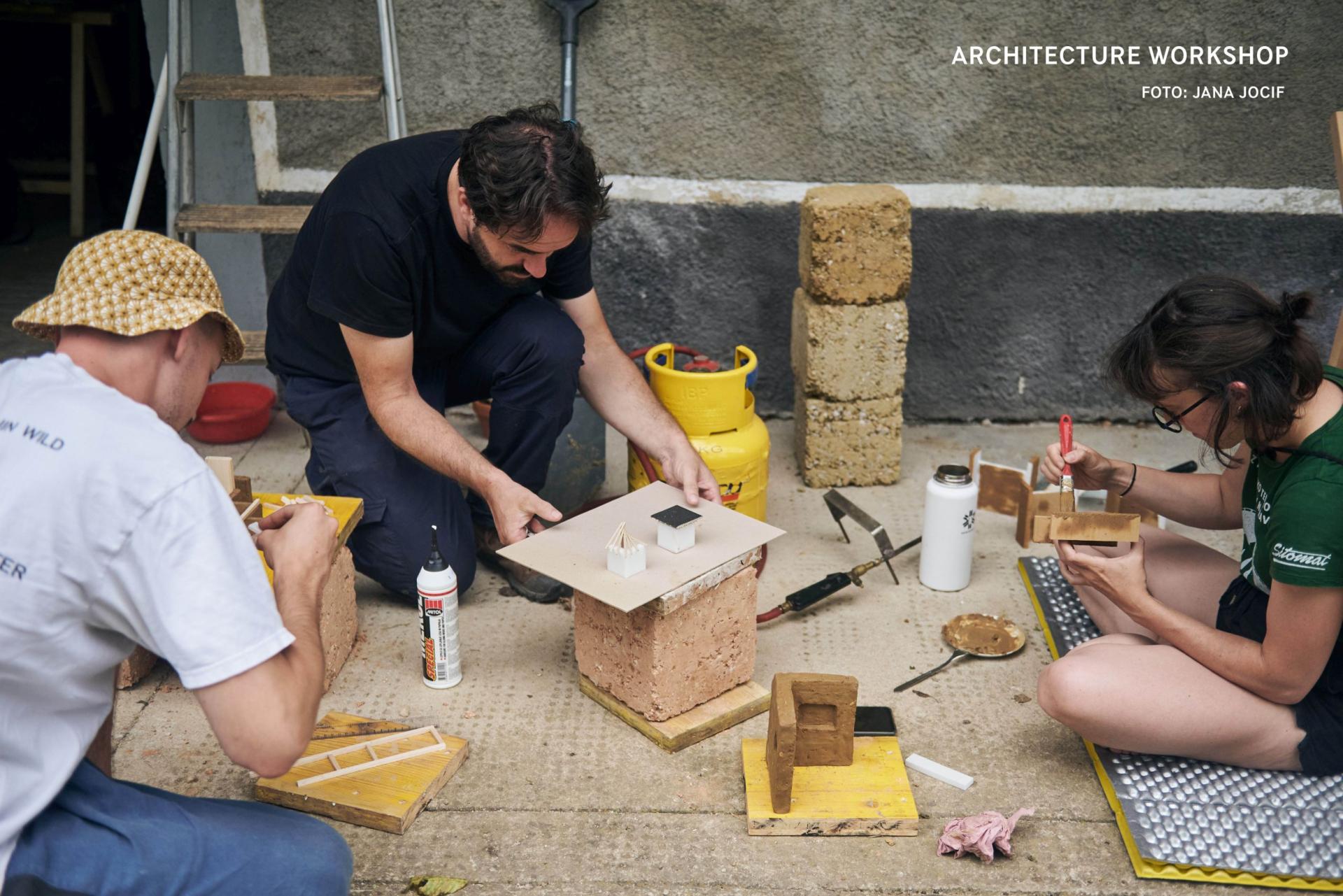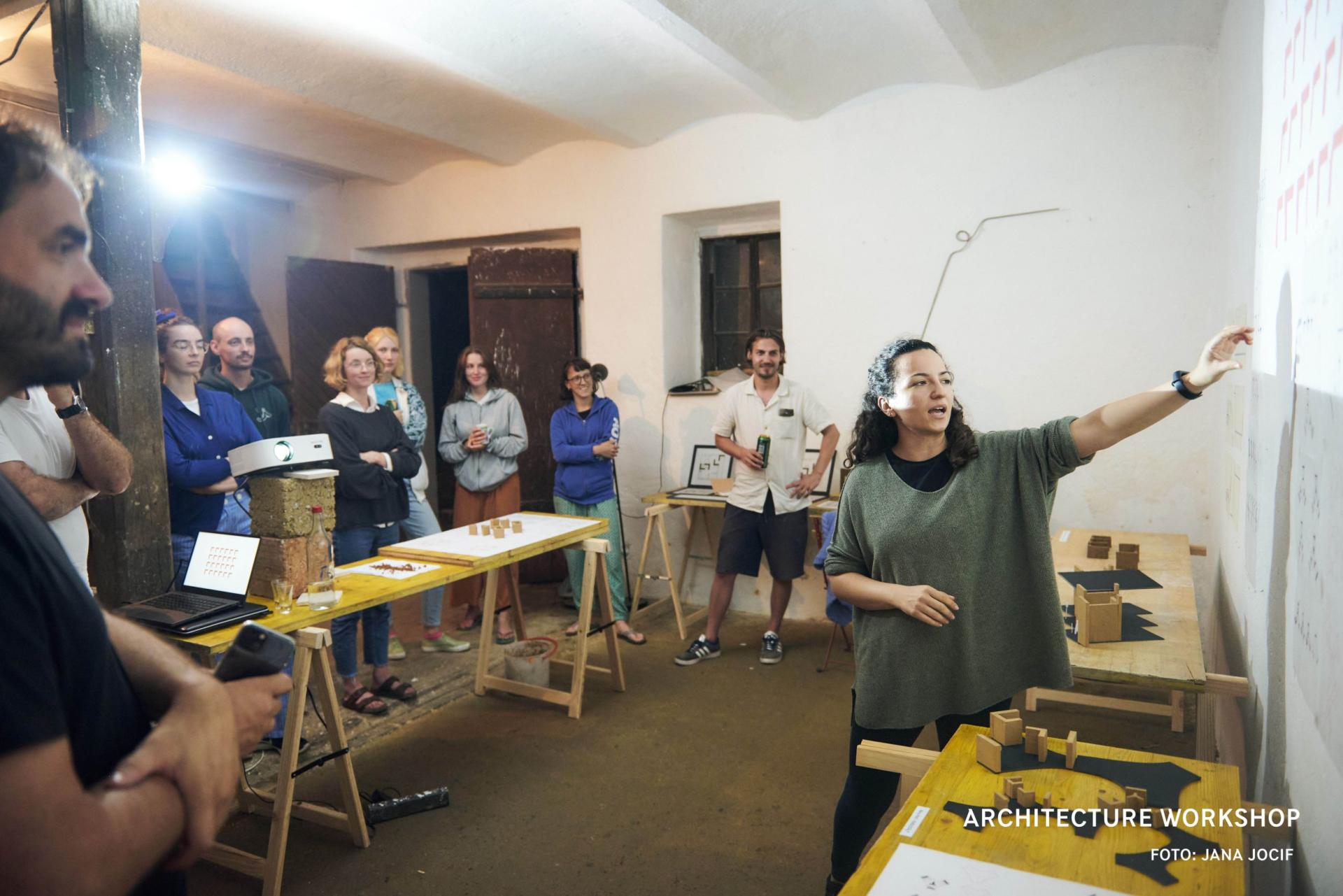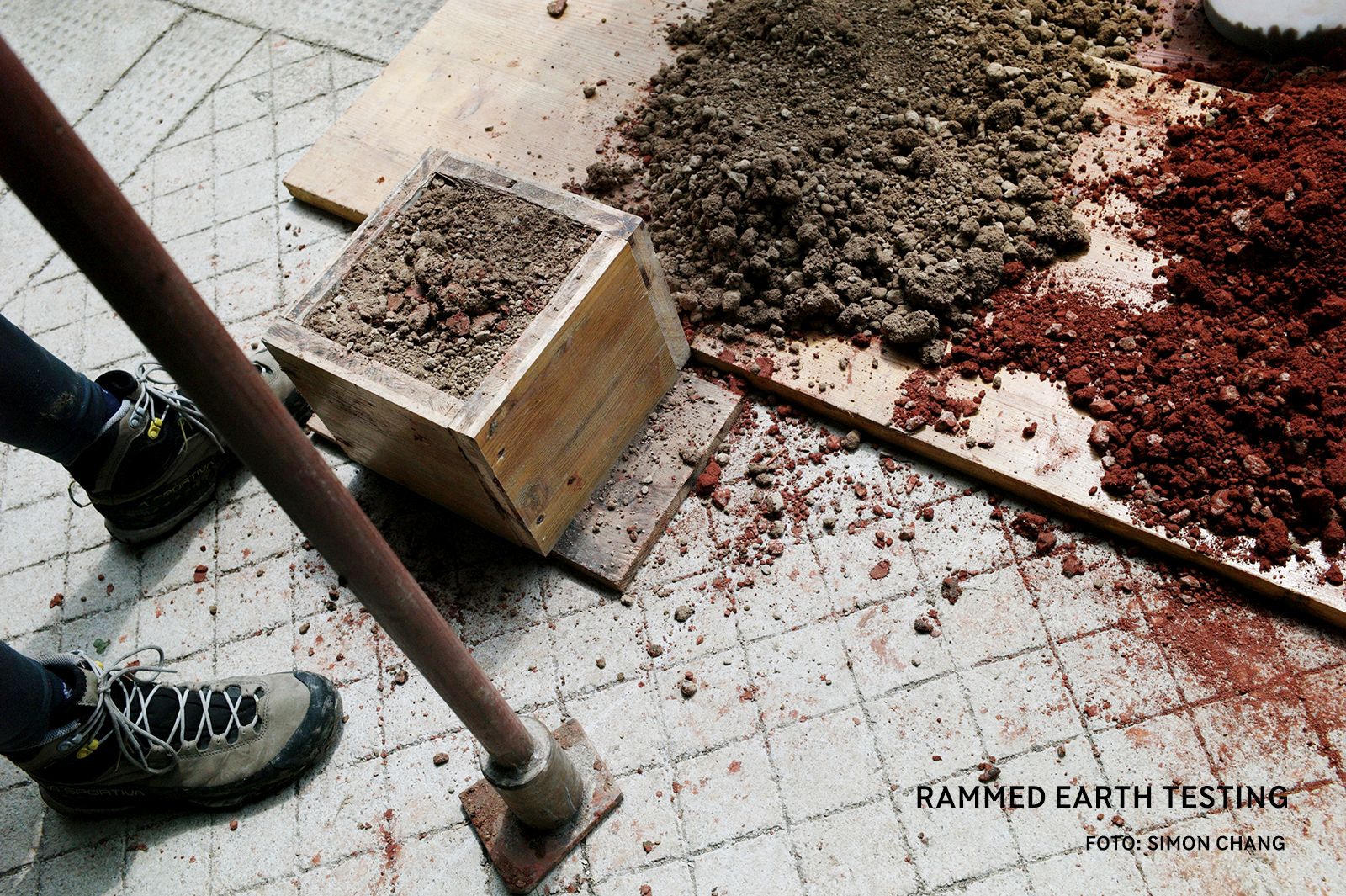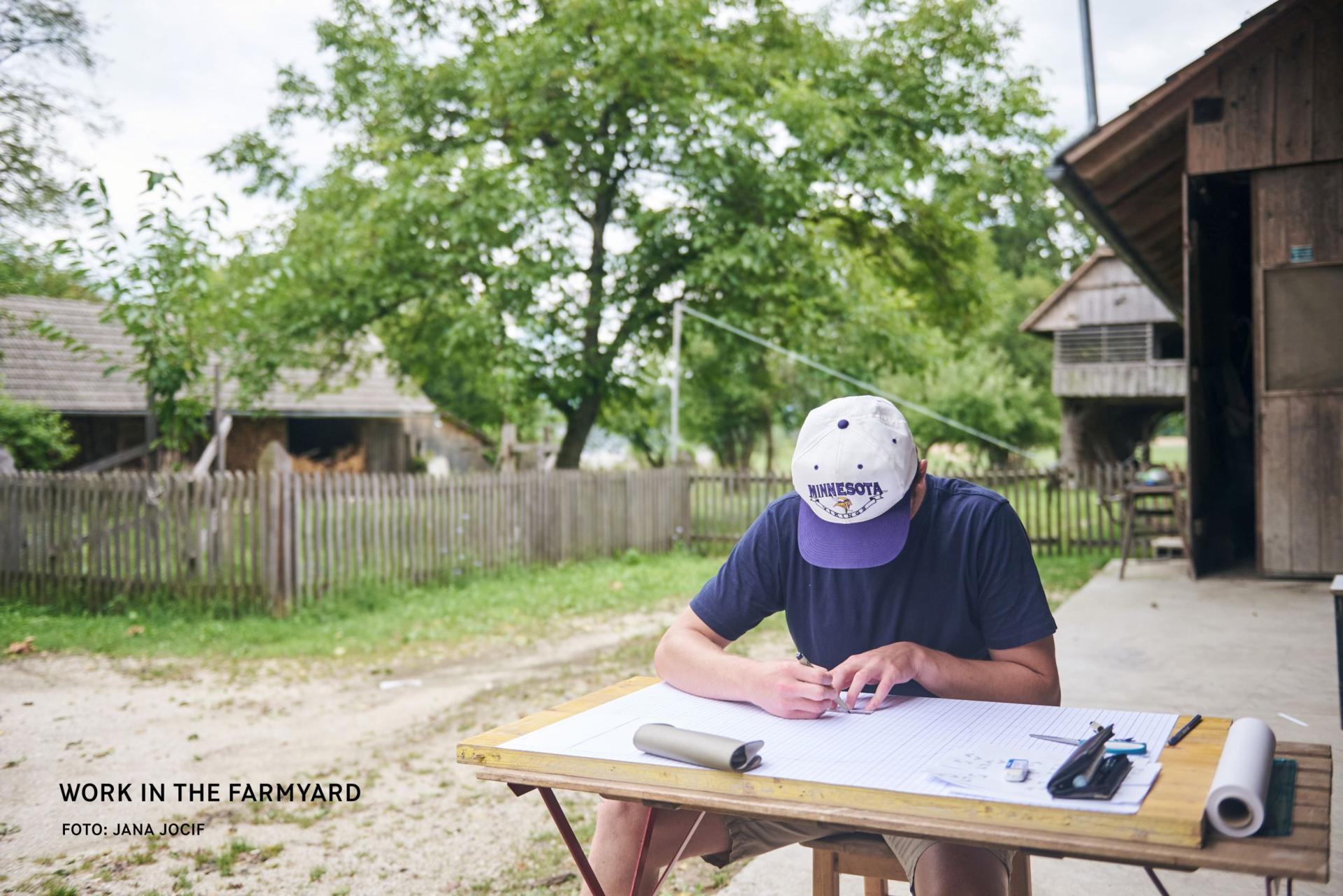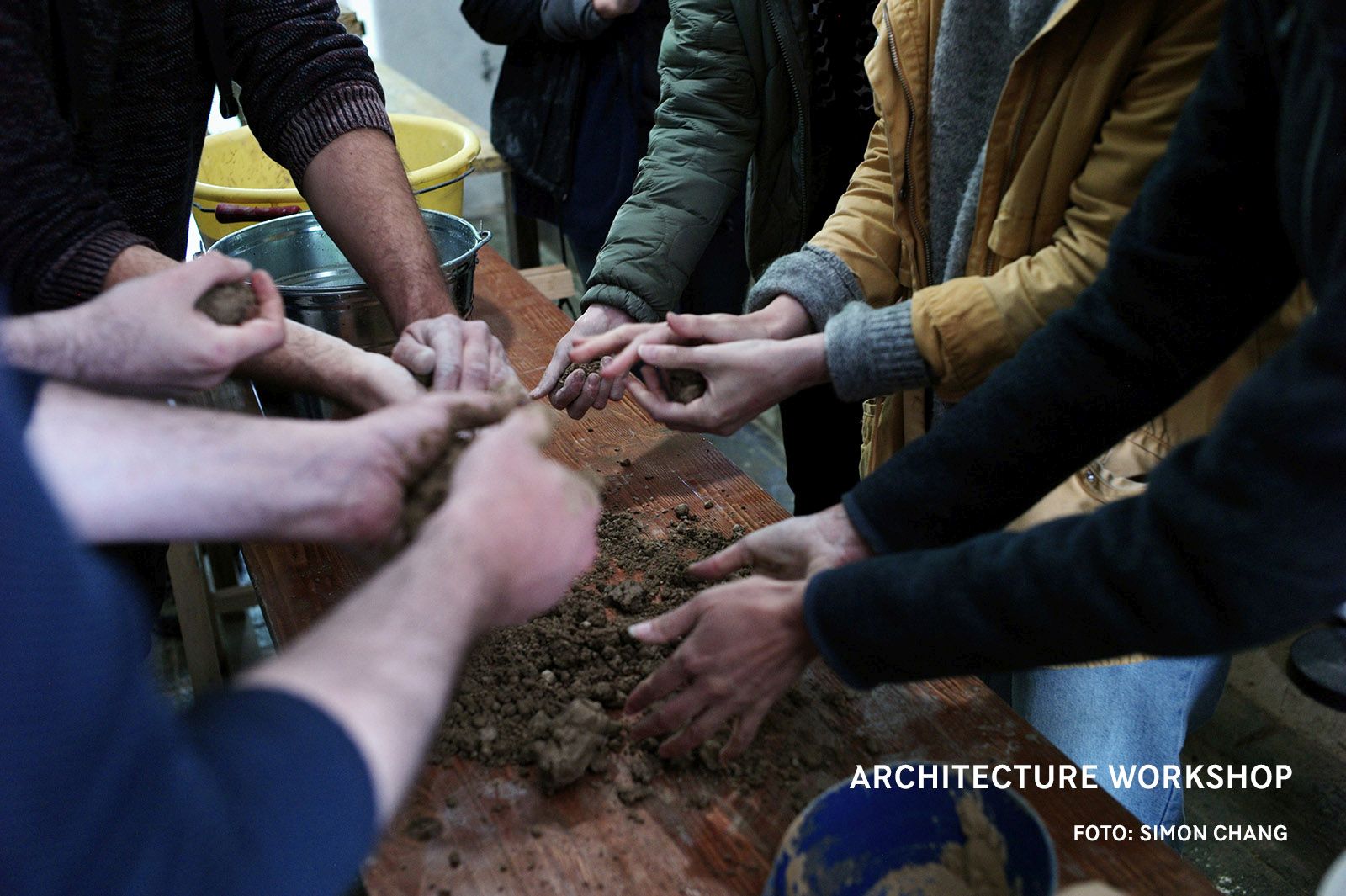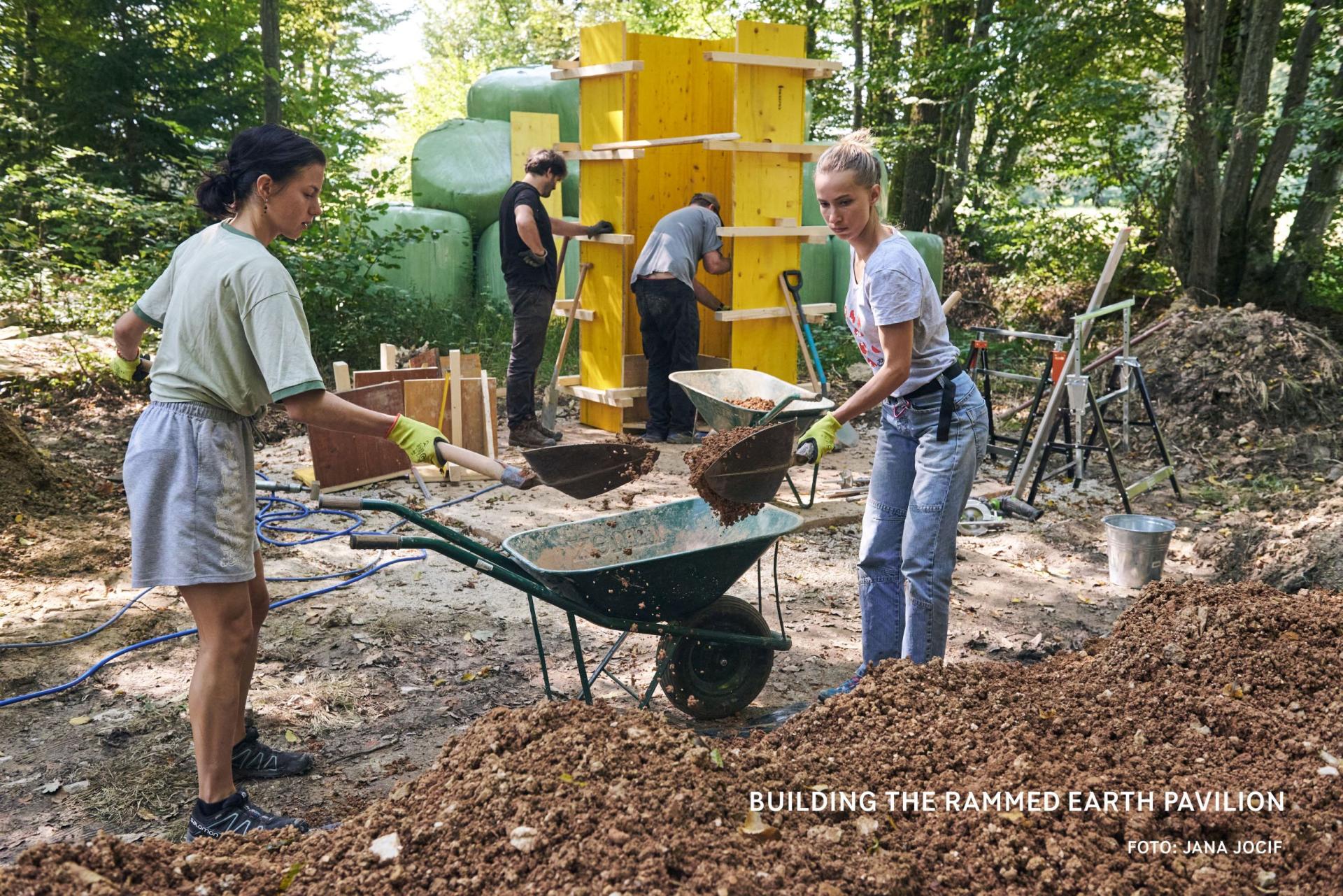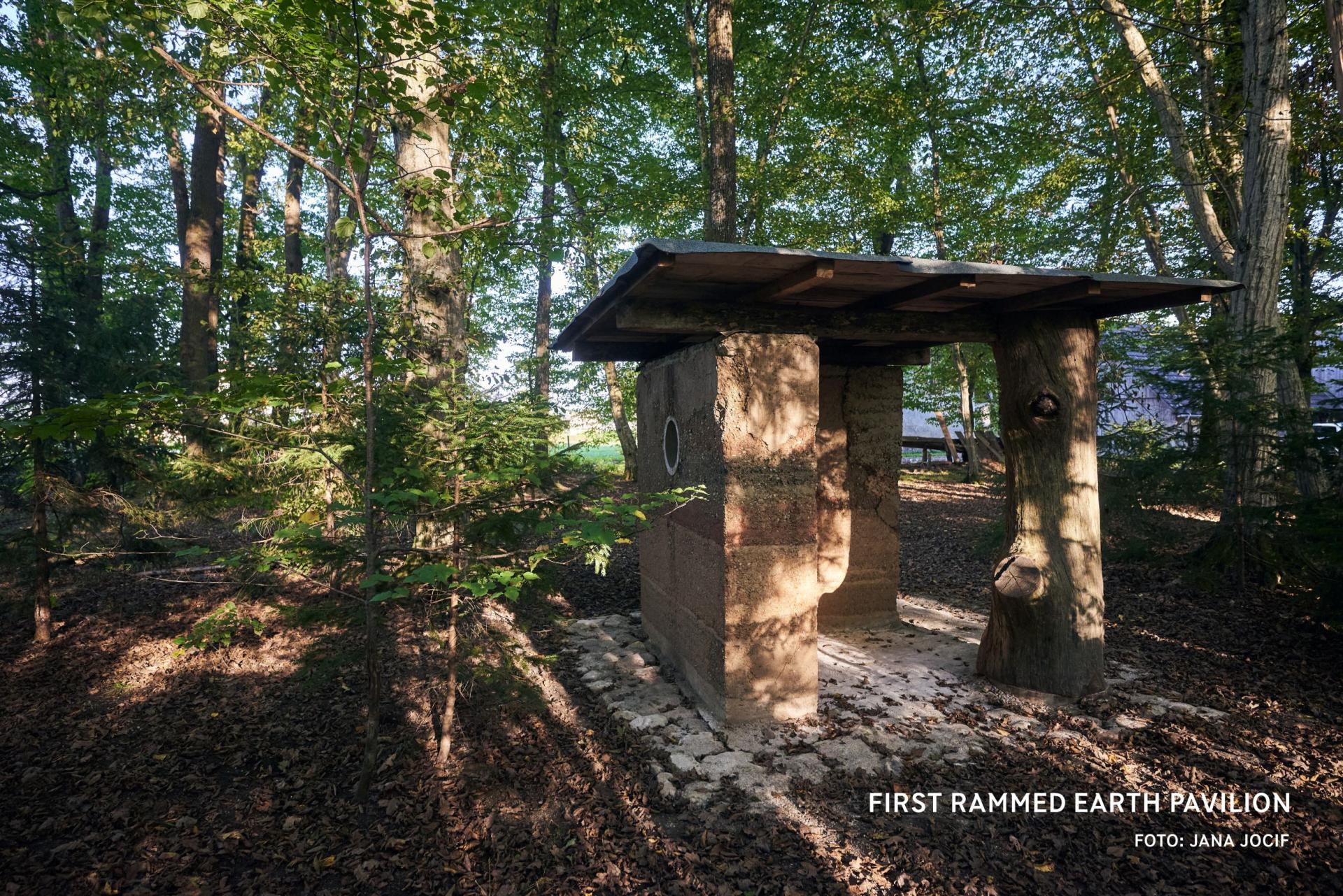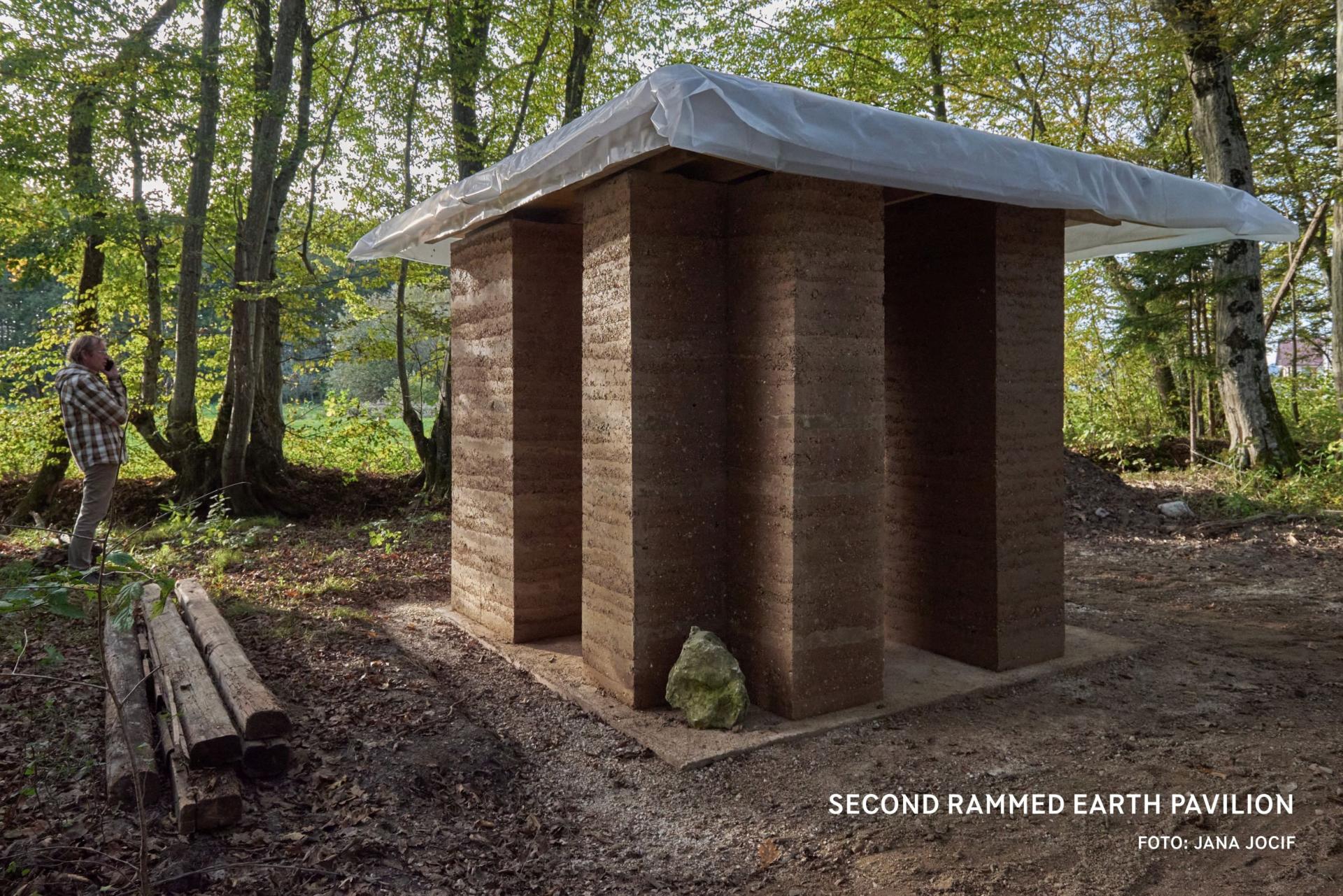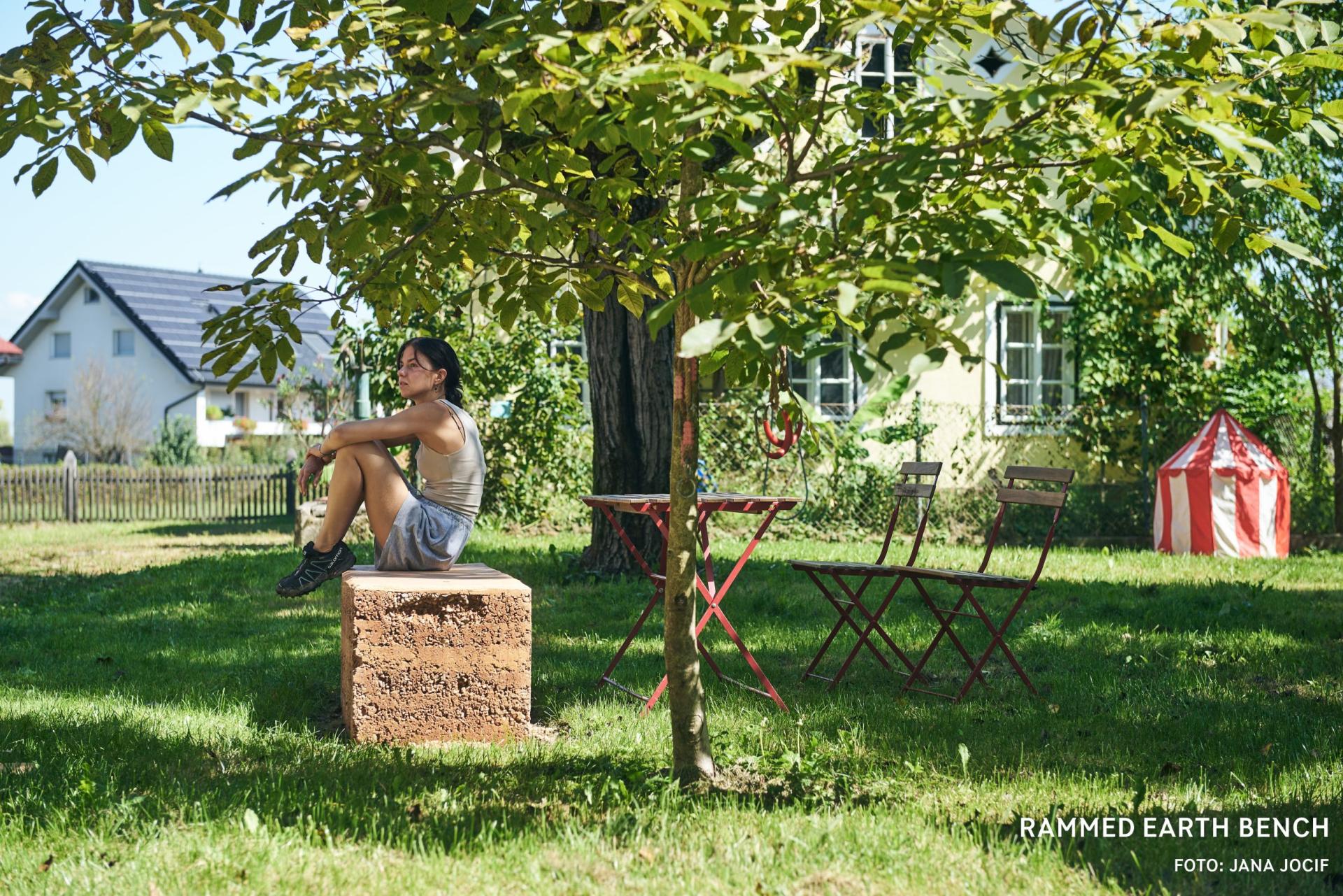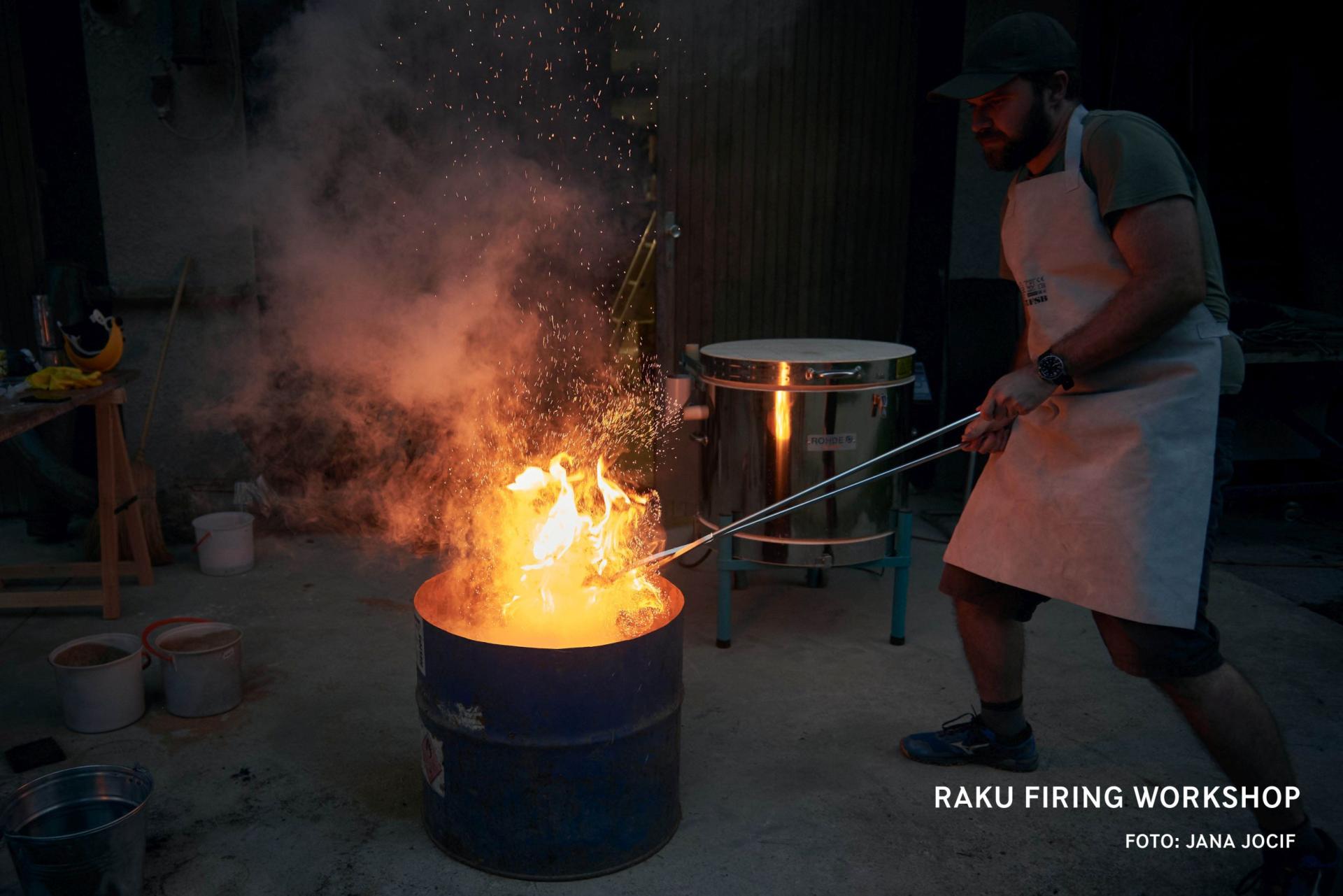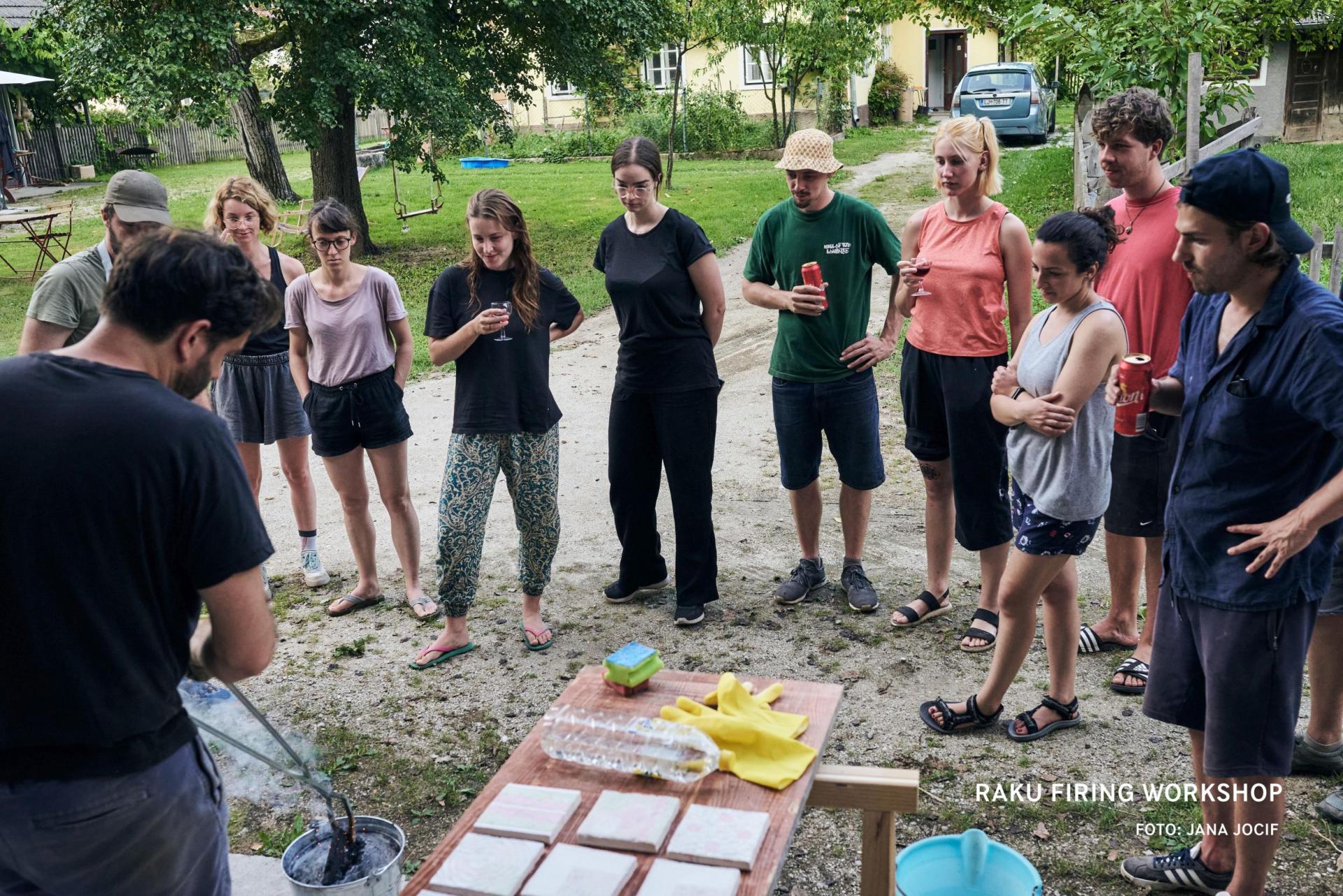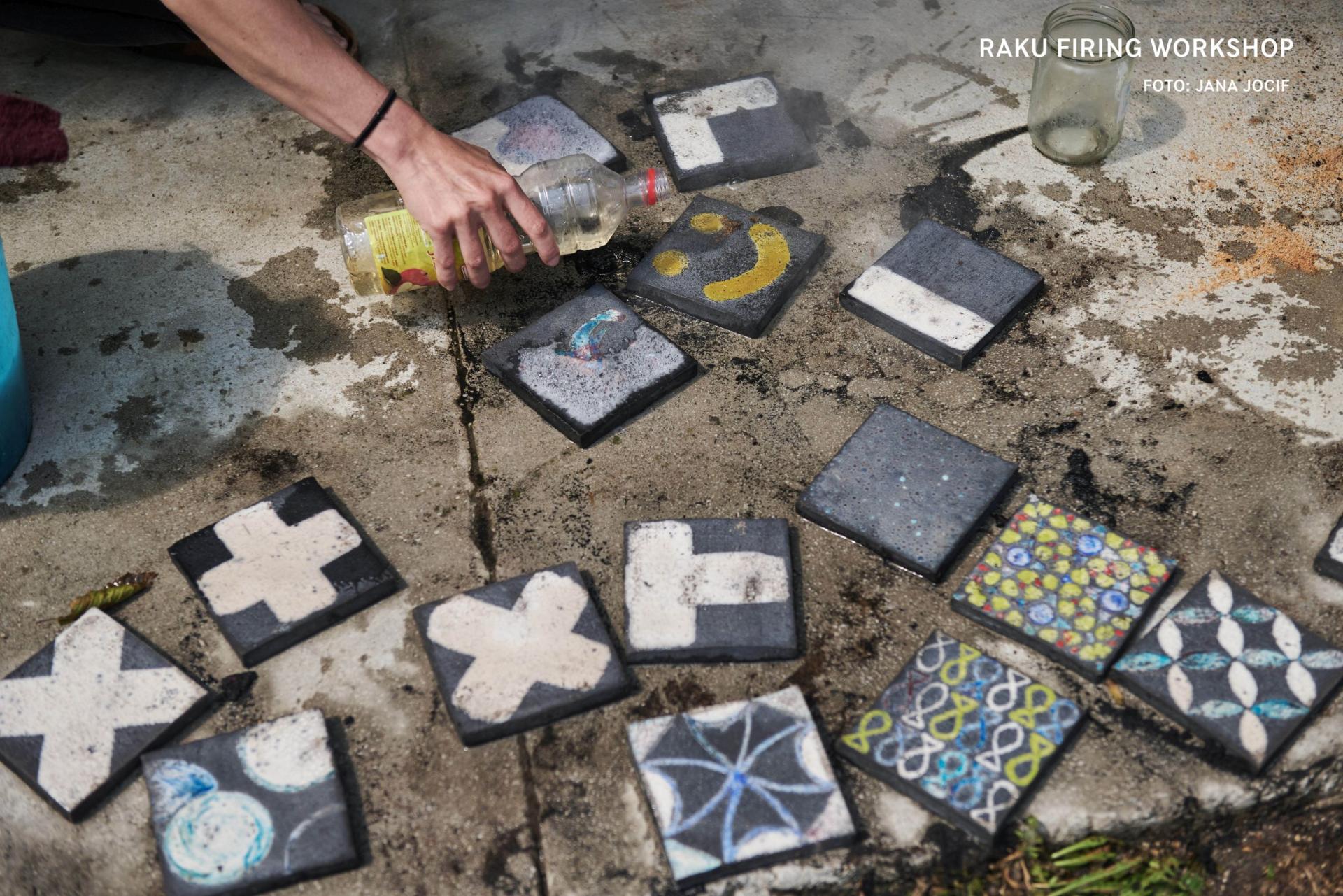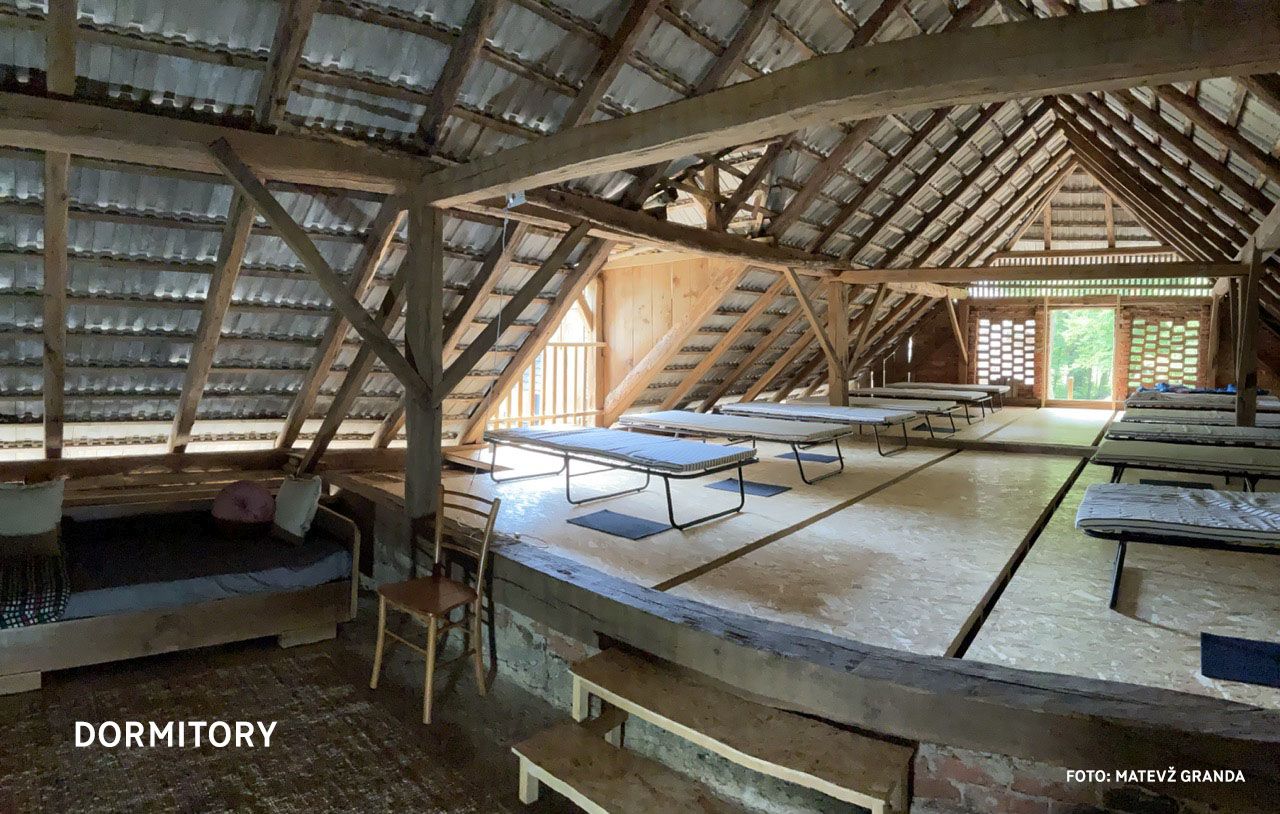Center for Building with Earth
Basic information
Project Title
Center for Building with Earth
Full project title
Center for Building with Earth
Category
Shaping a circular industrial ecosystem and supporting life-cycle thinking
Project Description
Can we build differently? Can we build more environmentally friendly? Could the earth be a building material of the future? These are the questions we are addressing at the Centre for Building with Earth. We are searching for answers through international workshops, research work, and symposia. We are developing earth building techniques, testing different mixtures, and innovating architectural solutions. Our main goal is to reintegrate the earth into contemporary architecture.
Geographical Scope
National
Project Region
Slovenia
Urban or rural issues
It addresses urban-rural linkages
Physical or other transformations
It refers to other types of transformations (soft investment)
EU Programme or fund
No
Description of the project
Summary
The earth is an archaic building material that has been forgotten in the last century. Due to the current environmental crisis, it is making a comeback and gaining interest because of its extremely low CO2 footprint. The present construction industry does not offer technical solutions for such construction. Therefore, we have decided to set up a research center to develop the use of earth in contemporary architecture.
The Center was created as a result of the work of our team, which is involved in publishing the main architectural magazine in Slovenia - Outsider magazine. Since the magazine's launch in 2015, our focus has been on promoting sustainable building techniques, particularly earth (and clay). Our efforts include the organization of events, exhibitions, round tables, and architecture competitions. This is how we encountered the work of Martin Rauch, who inspired us to explore this field in a practical way. In 2021, we founded the Center for Building with Earth.
Since then, we have held over 20 workshops, including four international ones, three festivals, and six exhibitions. We have built two pavilions and three small test structures. In addition to researching earth structures, we are also focusing on hybrid constructions with timber, as these types of structures are in optimal balance in terms of energy use and carbon footprint. In 2022, we set up a research laboratory. In 2021, we organized an international competition, Rammed Earth House, and received 469 entries from all over the world.
Our audience includes both professionals and the general public. Workshop participants are mostly architecture students, but other events attract anyone interested in building with natural materials. We host experts who share their knowledge.
The Center for Building with Earth has found its home on a farm in Dobrava in southeastern Slovenia. The old barn has been converted into a multi-purpose building with sleeping quarters, a bathroom, and a workshop/showroom.
The Center was created as a result of the work of our team, which is involved in publishing the main architectural magazine in Slovenia - Outsider magazine. Since the magazine's launch in 2015, our focus has been on promoting sustainable building techniques, particularly earth (and clay). Our efforts include the organization of events, exhibitions, round tables, and architecture competitions. This is how we encountered the work of Martin Rauch, who inspired us to explore this field in a practical way. In 2021, we founded the Center for Building with Earth.
Since then, we have held over 20 workshops, including four international ones, three festivals, and six exhibitions. We have built two pavilions and three small test structures. In addition to researching earth structures, we are also focusing on hybrid constructions with timber, as these types of structures are in optimal balance in terms of energy use and carbon footprint. In 2022, we set up a research laboratory. In 2021, we organized an international competition, Rammed Earth House, and received 469 entries from all over the world.
Our audience includes both professionals and the general public. Workshop participants are mostly architecture students, but other events attract anyone interested in building with natural materials. We host experts who share their knowledge.
The Center for Building with Earth has found its home on a farm in Dobrava in southeastern Slovenia. The old barn has been converted into a multi-purpose building with sleeping quarters, a bathroom, and a workshop/showroom.
Key objectives for sustainability
The primary objective of Center for Building with Earth is promotion and research of building with earth, which is arguably the most sustainable building method. Earth is readily available worldwide and can often be sourced from the building site itself. This technique can make use of materials typically considered construction waste, such as earth and sand removed from the building sites. Unlike conventional materials, the method does not use chemical binders or reinforcements, resulting in very low CO2 emissions and minimal energy usage. After the building is no longer in use, the rammed earth walls can be easily demolished and material reused. Through ongoing research and the development of innovative approaches to earthen construction, we hope to make these techniques more accessible, affordable and easier to employ in the developed world.
In 2022, our research and development efforts, made possible by the facilities at the Center for Building with Earth, yielded our first results. We successfully developed a system of rammed earth modules that can be utilized for a wide range of applications and scenarios.
With minimal intervention, we achieved maximum results: preserving the original structures of the building while adapting them to the new use. The Center is the first institution in Slovenia and the wider region aimed at promoting and developing earthen constructions. Our partnership with Outsider magazine helps us reach a wide audience and, importantly, contributes to raising awareness about sustainable building and living.
In 2022, our research and development efforts, made possible by the facilities at the Center for Building with Earth, yielded our first results. We successfully developed a system of rammed earth modules that can be utilized for a wide range of applications and scenarios.
With minimal intervention, we achieved maximum results: preserving the original structures of the building while adapting them to the new use. The Center is the first institution in Slovenia and the wider region aimed at promoting and developing earthen constructions. Our partnership with Outsider magazine helps us reach a wide audience and, importantly, contributes to raising awareness about sustainable building and living.
Key objectives for aesthetics and quality
With the majority of our team coming from an architecture background, we have always placed great importance on the aesthetic aspect of our projects right from their inception. Our objective with the Center for Building with Earth has been to create a space suitable for organizing a wide variety of events, including workshops, exhibitions, and symposiums. The space needs to be practical, comfortable, and beautiful.
The aesthetic qualities of spaces we have built and designed always follow and emerge from their functionality. The same approach is followed in our research projects. On site we have so far built two experimental pavilions from rammed earth. Both were built for the purpose of learning about the material and building techniques, but with an eye for the architectural composition, proportions, and the qualities of the material itself.
Earthen constructions which we are developing and promoting offer unique opportunities for architectural expression, emerging from the properties of the material itself: the unique visual structure and tactile quality of earth, as well as physical properties.
Events at the Center are not bound only to the field of architecture. At our events, we have hosted multiple internationally acclaimed artists, among them conceptual artist Matej Andraž Vogrinčič, sculptor Kristina Rutar, photographer Simon Chang, and ceramic artists Marta Rauch Debevec and Anja Slapničar.
Our unique approach, which combines technical research of sustainable building materials with continuously developing forum for connecting builders, architects, artists and other professionals, enables cross-pollination between different artistic fields and disciplines, and plants seeds for fresh ideas and future collaborations.
The aesthetic qualities of spaces we have built and designed always follow and emerge from their functionality. The same approach is followed in our research projects. On site we have so far built two experimental pavilions from rammed earth. Both were built for the purpose of learning about the material and building techniques, but with an eye for the architectural composition, proportions, and the qualities of the material itself.
Earthen constructions which we are developing and promoting offer unique opportunities for architectural expression, emerging from the properties of the material itself: the unique visual structure and tactile quality of earth, as well as physical properties.
Events at the Center are not bound only to the field of architecture. At our events, we have hosted multiple internationally acclaimed artists, among them conceptual artist Matej Andraž Vogrinčič, sculptor Kristina Rutar, photographer Simon Chang, and ceramic artists Marta Rauch Debevec and Anja Slapničar.
Our unique approach, which combines technical research of sustainable building materials with continuously developing forum for connecting builders, architects, artists and other professionals, enables cross-pollination between different artistic fields and disciplines, and plants seeds for fresh ideas and future collaborations.
Key objectives for inclusion
The Center for Building with Earth serves as a free and open platform for the exchange of knowledge, experiences, and opinions among students from various disciplines, architects, artists, and other individuals. The majority of our events are open to all who are interested in attending. Through promotion in Outsider magazine, on our website, and via social media, we are able to reach and invite a wide and diverse audience. We are publishing reports and findings from our workshops.
We have successfully made most of our events free for attendees, thereby increasing their accessibility and affordability.
The Center facilitates the development of building techniques aimed at making sustainable construction with rammed earth more affordable and accessible to the general public. Currently, rammed earth constructions are approximately 30% more expensive than comparable conventional structures, mainly because earthen structures require more manual labour. By designing modules in basic shapes, we can simplify the planning phase of construction, streamline the building process itself (which reduces the number of required workers) thereby reducing the overall cost of this sustainable building method.
This developed method could be applied in a variety of temporary or permanent buildings, serving immediate needs of vulnerable societal groups. Examples include shelters for refugees and homeless, bus stops, community centers and similar structures.
We have successfully made most of our events free for attendees, thereby increasing their accessibility and affordability.
The Center facilitates the development of building techniques aimed at making sustainable construction with rammed earth more affordable and accessible to the general public. Currently, rammed earth constructions are approximately 30% more expensive than comparable conventional structures, mainly because earthen structures require more manual labour. By designing modules in basic shapes, we can simplify the planning phase of construction, streamline the building process itself (which reduces the number of required workers) thereby reducing the overall cost of this sustainable building method.
This developed method could be applied in a variety of temporary or permanent buildings, serving immediate needs of vulnerable societal groups. Examples include shelters for refugees and homeless, bus stops, community centers and similar structures.
Results in relation to category
The project has resulted in the establishment of a major research center that communicates with the public in a variety of ways:
- bringing together experts in the field of natural building and establishing professional exchanges,
- Education in earth building
- Research on different techniques and processes
- Innovation in architectural solutions
- Connecting art and architecture
- Lectures and symposia
We consider a very important result that the Center has become a recognizable institution involved in various collaborations. Joint projects with TU Graz and the Faculty of Architecture in Ljubljana are also being established.
The Center for Building with Earth has become an open platform that is recognizable among a wider audience. It attracts the general public and informs them about building issues and sustainable solutions that can solve the environmental crisis.
Building with the earth in contemporary architecture is becoming an increasingly recognizable theme in the Slovenian public sphere, and the Center has played a key role in this. The link with Outsider magazine allows for a wide media visibility.
The Center has made significant progress in the research and use of sustainable materials and in raising awareness of responsible architecture.
- bringing together experts in the field of natural building and establishing professional exchanges,
- Education in earth building
- Research on different techniques and processes
- Innovation in architectural solutions
- Connecting art and architecture
- Lectures and symposia
We consider a very important result that the Center has become a recognizable institution involved in various collaborations. Joint projects with TU Graz and the Faculty of Architecture in Ljubljana are also being established.
The Center for Building with Earth has become an open platform that is recognizable among a wider audience. It attracts the general public and informs them about building issues and sustainable solutions that can solve the environmental crisis.
Building with the earth in contemporary architecture is becoming an increasingly recognizable theme in the Slovenian public sphere, and the Center has played a key role in this. The link with Outsider magazine allows for a wide media visibility.
The Center has made significant progress in the research and use of sustainable materials and in raising awareness of responsible architecture.
How Citizens benefit
The Centre for Building with Earth has public interest at its core. Our research, events, symposia, articles and the knowledge we accumulate are all availible to the public. The primary mission of our project is raising awareness of many challenges for the construction sector in effectively addresing climate change. In this context, we place great importance on social inclusiveness and, as such, we openly and transparently communicate all our activities to the general and professional public throughout the region.
In our activities, we also pay special attention to engagement with the local community. All the resources needed for the Centre's operation are sourced locally. These include the materials with which we build as well as the subcontractors involved in various phases of the work: excavation, preparation of equipment, material procurement, catering and other basic supplies. Forming a part of the local economic network is very important for us, and the local community closely follows our activities with interest and appreciation.
In our activities, we also pay special attention to engagement with the local community. All the resources needed for the Centre's operation are sourced locally. These include the materials with which we build as well as the subcontractors involved in various phases of the work: excavation, preparation of equipment, material procurement, catering and other basic supplies. Forming a part of the local economic network is very important for us, and the local community closely follows our activities with interest and appreciation.
Physical or other transformations
It refers to other types of transformations (soft investment)
Innovative character
Mainstream building industry has a huge environmental footprint, largely due to the energy-intensive processes involved in cement and steel production, which contribute significantly to greenhouse gas emissions. How can we reduce it? The historical development of architecture has witnessed the wide adoption of steel and concrete, replacing the natural materials used throughout history. They have many advantages, including greater strength and faster application. However, their key disadvantages have only become evident in recent decades, as climate change has become a tangible reality.
A key advantage of the materials and construction methods we are exploring is that they have a significantly lower environmental footprint. Our aim is to bring back techniques and materials that were common in the past as alternative ways of building.
Another area we are interested in is the social aspect of construction. Communal building enables us to build physical structures while simultaneously building communities. Through the workshops we organise, we observe that the participants personally connect with the building process. This way of building could become a tool to bring individuals closer together and to overcome the divisions that are increasingly present in all societies.
A third aspect is the use of materials that are otherwise considered as construction waste. The material generated by excavations for roads and new buildings is usually considered as waste. However, if properly prepared, it can become a high quality, sustainable and healthy material for construction.
A key advantage of the materials and construction methods we are exploring is that they have a significantly lower environmental footprint. Our aim is to bring back techniques and materials that were common in the past as alternative ways of building.
Another area we are interested in is the social aspect of construction. Communal building enables us to build physical structures while simultaneously building communities. Through the workshops we organise, we observe that the participants personally connect with the building process. This way of building could become a tool to bring individuals closer together and to overcome the divisions that are increasingly present in all societies.
A third aspect is the use of materials that are otherwise considered as construction waste. The material generated by excavations for roads and new buildings is usually considered as waste. However, if properly prepared, it can become a high quality, sustainable and healthy material for construction.
Disciplines/knowledge reflected
With the Centre for Building with Earth, we have brought together diverse disciplines and skills, delving into a wide range of earth building methods and techniques. This exploration includes both structural and non-structural solutions. However, the primary focus of our research has been on rammed earth construction techniques. We were also interested in hybrid construction involving other natural materials, particularly wood, as these hybrid structures have proven to be the most environmentally successful.
This is why we have incorporated forestry and sustainable wood use in our research. Collaboration with the renowned Slovenian forester Maria Jakopin, we benefit from her expertise, which enriches our understanding of sustainable construction principles.
Art and architecture have always been naturally linked. This connection has been lost in recent decades. New reflections on the links have been stimulated by involving artists in the processes. We invited sculptor Kristina Rutar, ceramicist Anja Slapničar, artist Matej Andraž Vogrinčič and many others. Building with the earth has its own strong aesthetic potential. That is why we find the connection with art very positive.
Photography is a medium that has continuously permeated our processes, and we have worked with two excellent photographers. Simon Chang, a Taiwanese photographer living in Slovenia, brought a unique perspective, helping us establish connections with the local environment and its people. While photographer Jana Jocif documented our many activities, ranging from workshops to public events.
Media workshops are our own interdisciplinary invention, encouraging participants to write down and share their findings.
We recognize the crucial role of sociology in our work. Investigating construction as a social phenomenon is pivotal in transforming both the way we build and how we perceive the built environment. All the connections have contributed significantly to the impact of our project.
This is why we have incorporated forestry and sustainable wood use in our research. Collaboration with the renowned Slovenian forester Maria Jakopin, we benefit from her expertise, which enriches our understanding of sustainable construction principles.
Art and architecture have always been naturally linked. This connection has been lost in recent decades. New reflections on the links have been stimulated by involving artists in the processes. We invited sculptor Kristina Rutar, ceramicist Anja Slapničar, artist Matej Andraž Vogrinčič and many others. Building with the earth has its own strong aesthetic potential. That is why we find the connection with art very positive.
Photography is a medium that has continuously permeated our processes, and we have worked with two excellent photographers. Simon Chang, a Taiwanese photographer living in Slovenia, brought a unique perspective, helping us establish connections with the local environment and its people. While photographer Jana Jocif documented our many activities, ranging from workshops to public events.
Media workshops are our own interdisciplinary invention, encouraging participants to write down and share their findings.
We recognize the crucial role of sociology in our work. Investigating construction as a social phenomenon is pivotal in transforming both the way we build and how we perceive the built environment. All the connections have contributed significantly to the impact of our project.
Methodology used
The methodology we used in the project could be briefly described as a iterative cycle between theory and practice, between an intuitive and programmed approaches.
In the initial phase, we studied existing literature and practices. Building upon this knowledge, we started with first practical experiments, culminating in the creation of the first pavilion. At the same time, we tried out different earth mixtures and tested them in the ZAG laboratory. We were based on the principle of learning by doing.
We analysed the processes of building the first pavilion and divided the processes into single steps. The first step is the preparation of the mixture, followed by is the preparation of the formwork and finishing with ramming of the soil. Each of the processes was analysed and avenues for improvement were explored. Martin Rauch has been our consultant in this process.
Recognizing the potential for increased efficiency through systematization, we developed a modular system comprised of basic elements. The hypotheses of the analysis were verified by building a second pavilion, which is built with four corner modules. Each of them was an exercise in improving our processes with a new workshop.
Future research will focus on improving earth mixtures with natural additives. Another area of research will focus on automating the application of materials.
In the initial phase, we studied existing literature and practices. Building upon this knowledge, we started with first practical experiments, culminating in the creation of the first pavilion. At the same time, we tried out different earth mixtures and tested them in the ZAG laboratory. We were based on the principle of learning by doing.
We analysed the processes of building the first pavilion and divided the processes into single steps. The first step is the preparation of the mixture, followed by is the preparation of the formwork and finishing with ramming of the soil. Each of the processes was analysed and avenues for improvement were explored. Martin Rauch has been our consultant in this process.
Recognizing the potential for increased efficiency through systematization, we developed a modular system comprised of basic elements. The hypotheses of the analysis were verified by building a second pavilion, which is built with four corner modules. Each of them was an exercise in improving our processes with a new workshop.
Future research will focus on improving earth mixtures with natural additives. Another area of research will focus on automating the application of materials.
How stakeholders are engaged
The Centre for Building with Earth is an open platform that works with many stakeholders at different levels.
The main one is Outsider magazine, which is also the founder of the Centre. The work of the Centre and Outsider magazine is connected at many levels. The magazine publishes the results and achievements of the Centre and informs the public about the activities we carry out.
The first project at the Centre was carried out in the framework of the Erasmus+ programme and was entitled "Forward to the Earth" (2021 - 22). We organised an international workshop for young people from Slovenia, Austria and Italy. During a week, we transformed a former barn into a project space. The project space is the central space of the centre's research and demonstration activities.
The Ministry of Culture of the Republic of Slovenia (through CZK - Centre for Creativity) supported three of our collaborative projects. The first was an international competition Rammed Earth House. The result was outstanding. We received 469 projects from all over the world. With the support of the Ministry, we held two more symposia and one festival in 2022 and 2023.
In 2023 the main stakeholder was CIRCE (Creative Impact Research Center Europe), which was set up by the German Ministry of Culture. The project focused on the development of an innovative modular earth building system to bring this method into wider use. The cooperation conclu in December 2023.
Our partner throughout is ZAG (Building Research Institute). We are working with them on scientific tests and material verifications.
All these collaborations have had a number of positive effects:
involving young people, around 20 workshops open to everyone, public exhibitions and symposia, community building.
Above all, raising awareness that it is possible to build differently from the way we do things now, by building with natural materials that can provide the same comfort of living, but without the greenhouse emissions.
The main one is Outsider magazine, which is also the founder of the Centre. The work of the Centre and Outsider magazine is connected at many levels. The magazine publishes the results and achievements of the Centre and informs the public about the activities we carry out.
The first project at the Centre was carried out in the framework of the Erasmus+ programme and was entitled "Forward to the Earth" (2021 - 22). We organised an international workshop for young people from Slovenia, Austria and Italy. During a week, we transformed a former barn into a project space. The project space is the central space of the centre's research and demonstration activities.
The Ministry of Culture of the Republic of Slovenia (through CZK - Centre for Creativity) supported three of our collaborative projects. The first was an international competition Rammed Earth House. The result was outstanding. We received 469 projects from all over the world. With the support of the Ministry, we held two more symposia and one festival in 2022 and 2023.
In 2023 the main stakeholder was CIRCE (Creative Impact Research Center Europe), which was set up by the German Ministry of Culture. The project focused on the development of an innovative modular earth building system to bring this method into wider use. The cooperation conclu in December 2023.
Our partner throughout is ZAG (Building Research Institute). We are working with them on scientific tests and material verifications.
All these collaborations have had a number of positive effects:
involving young people, around 20 workshops open to everyone, public exhibitions and symposia, community building.
Above all, raising awareness that it is possible to build differently from the way we do things now, by building with natural materials that can provide the same comfort of living, but without the greenhouse emissions.
Global challenges
By establishing Center for Building with Earth, we aim to address the urgent issue of unsustainable construction materials that contribute to climate change and lead to environmental degradation. All activities in the Center are based around promoting, researching and developing methods of building with earth, which would encourage wide adoption of this sustainable material.
Earth is one of the most sustainable building materials available. While a third of the world’s population lives in houses built with earth, the technology has been largely forgotten by the developed world in the last century. We are currently witnessing renewed interest in earth as a building material among architects and investors in Europe. The use of rammed earth instead of concrete could significantly reduce energy use and CO2 emissions during the construction and the lifetime of buildings.
Our research goals are localised and focused on exploring solutions to problems which stand in the way of adopting building with earth. Our solutions include:
• Raising awareness about rammed earth construction in particular and sustainable living practices in general
• Developing method of building which will make building with rammed earth cheaper.
We are the only research and development center for building with earth in Slovenia and in wider region. All of our activities (events organised in the Center, articles in Outsider magazine etc.) primarily address local audiences.
Earth is one of the most sustainable building materials available. While a third of the world’s population lives in houses built with earth, the technology has been largely forgotten by the developed world in the last century. We are currently witnessing renewed interest in earth as a building material among architects and investors in Europe. The use of rammed earth instead of concrete could significantly reduce energy use and CO2 emissions during the construction and the lifetime of buildings.
Our research goals are localised and focused on exploring solutions to problems which stand in the way of adopting building with earth. Our solutions include:
• Raising awareness about rammed earth construction in particular and sustainable living practices in general
• Developing method of building which will make building with rammed earth cheaper.
We are the only research and development center for building with earth in Slovenia and in wider region. All of our activities (events organised in the Center, articles in Outsider magazine etc.) primarily address local audiences.
Learning transferred to other parties
NEW USES FOR OLD BUILDINGS
Using the existing, old buildings and infrastructure for new purposes (such as educational centers) is an exemplary practice. Our transformation of an old stable into working and living space has preserved the old structure (which has value in itself) and infused it with new life. This sustainable practice can be employed in a wide variety of different contexts.
THE WORKSHOP EFFECT
Students and other attendees at our workshops help with spreading the awareness and sharing the knowledge about sustainable building and living in their own social circles and workplaces. At the same time, attendees exchange experience among themselves and (especially in multi-day workshops) form a community, which often remains connected after the workshop is finished.
TRANSFERABILITY AS A VALUE
We firmly believe that basic information about this sustainable living and building practices should be disseminated as widely as possible. As a conslusion of one of the first projects we organised at Center for Building with Earth, we compiled a publication called Zemljini zvezki (Earth's notebooks), which is now availible for free on our website. The publication gathers all the knowledge and findings from the project and covers the topics of pedagogical potential of earth, earthen construction, building technlogies and deconstruction.
Using the existing, old buildings and infrastructure for new purposes (such as educational centers) is an exemplary practice. Our transformation of an old stable into working and living space has preserved the old structure (which has value in itself) and infused it with new life. This sustainable practice can be employed in a wide variety of different contexts.
THE WORKSHOP EFFECT
Students and other attendees at our workshops help with spreading the awareness and sharing the knowledge about sustainable building and living in their own social circles and workplaces. At the same time, attendees exchange experience among themselves and (especially in multi-day workshops) form a community, which often remains connected after the workshop is finished.
TRANSFERABILITY AS A VALUE
We firmly believe that basic information about this sustainable living and building practices should be disseminated as widely as possible. As a conslusion of one of the first projects we organised at Center for Building with Earth, we compiled a publication called Zemljini zvezki (Earth's notebooks), which is now availible for free on our website. The publication gathers all the knowledge and findings from the project and covers the topics of pedagogical potential of earth, earthen construction, building technlogies and deconstruction.
Keywords
sustainability
education
community building
research
workshop

